.png)
TNB New Tariff for Business Owners Explained!
What is TNB’s new non-domestic tariff restructure?
As of July 2025, TNB has introduced a new billing structure for non-domestic (business) users in Peninsular Malaysia. Instead of grouping users by business type (e.g. Tariff B, E1), the new structure charges you based on your voltage level:
- Low Voltage (LV)
- Medium Voltage (MV)
- High Voltage (HV)

2. Who is affected by this restructure — and how?
If your electricity account is registered under a non-domestic category — such as a Sdn. Bhd., enterprise, factory, retail outlet, or educational institution — you are affected.
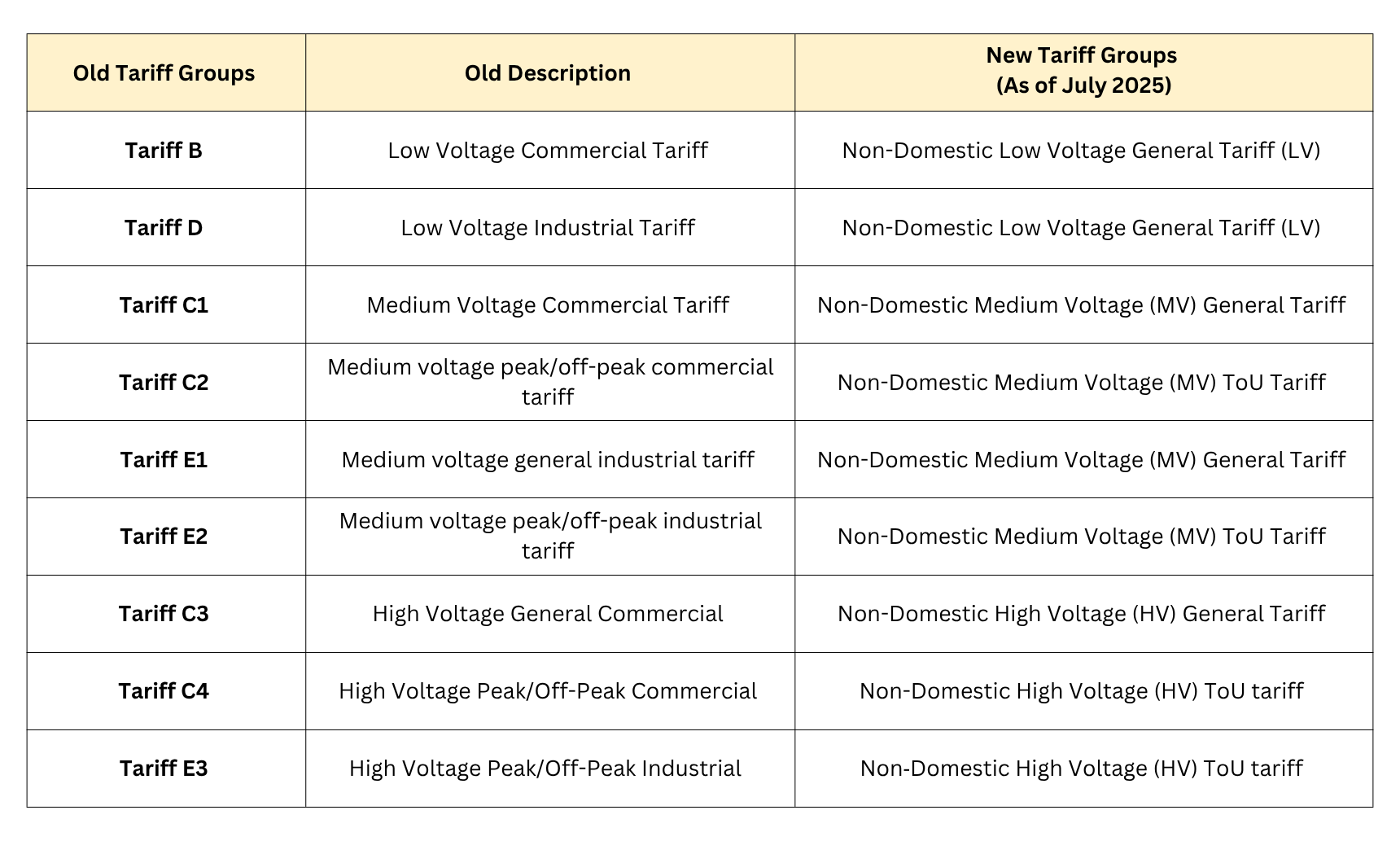
This change may affect how your bill is calculated — especially if you have high power usage or operate during peak hours.
3. When did this new tariff restructure take effect?
It took effect on 1 July 2025, and applies to all non-domestic users in Peninsular Malaysia. This structure is part of the Regulatory Period 4 (RP4) and is valid until 31 December 2027.
4. Why did TNB change the system?
The goal is to make your bill more transparent, fair, and reflective of actual usage patterns. Key improvements include:
- Clear breakdown of charges — so you know exactly what you’re paying for.
- Monthly fuel cost adjustments (via AFA) — instead of the previous 6-month cycle (via ICPT).
- Support for Time-of-Use (ToU) tariffs — letting you save more by shifting operations to off-peak hours.
This change gives businesses more control over costs by showing where and when electricity is used most — and where savings are possible.
6. What are the new components of your electricity bill?
Your bill now includes five transparent components, offering more clarity on where your costs come from:
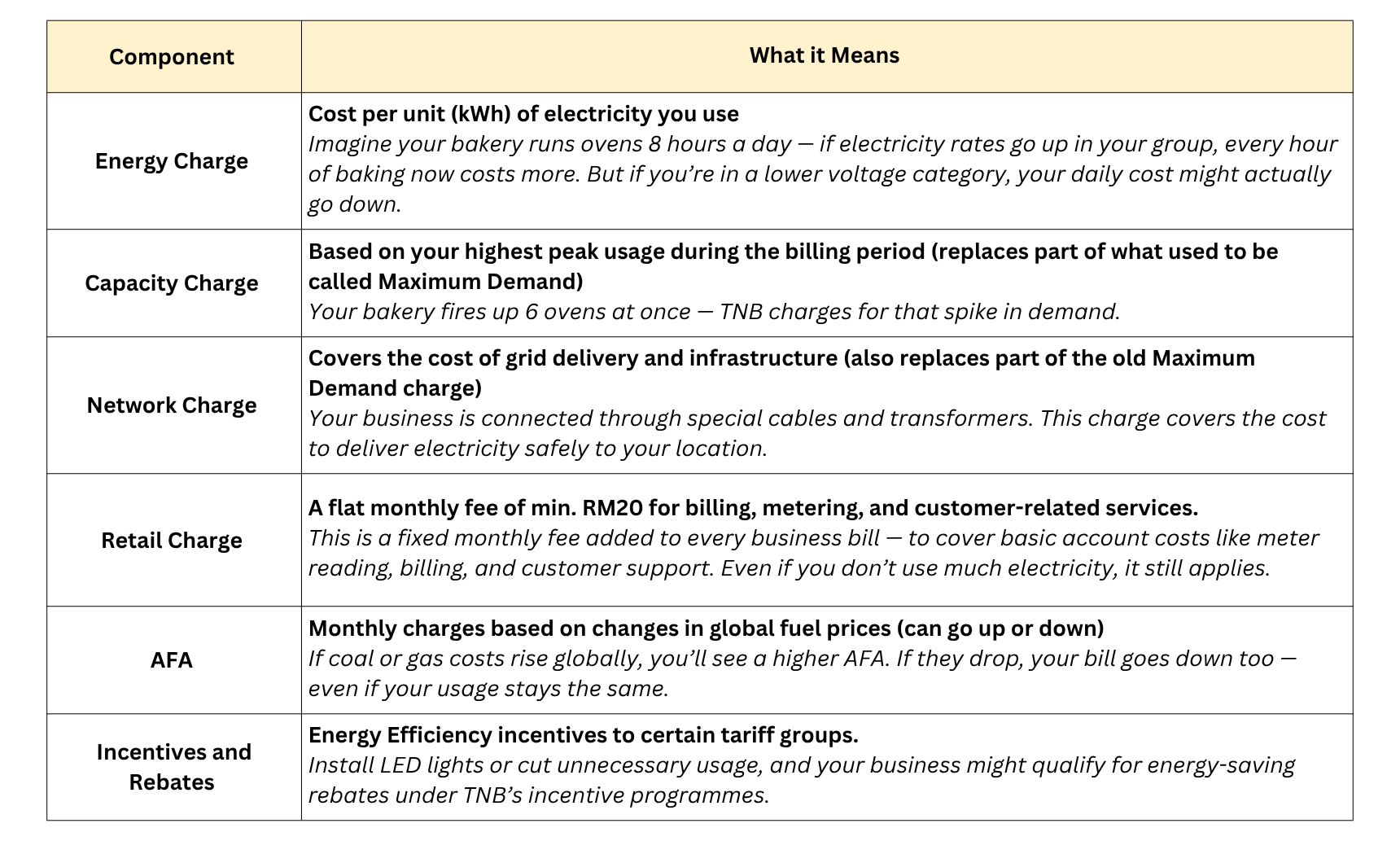
This new structure provides a clearer view of what you're paying for — and how your operations impact your electricity costs.
Note: What used to be called Maximum Demand (MD) is now split into two clearer charges: Capacity and Network.
*You should receive 2 electricity bills in July (a transitional bill), that shows both your old and new tariff structures and rates (refer image below).
.jpg)
7. What tariff options do you have?
Under the new structure, each voltage group (LV, MV, HV) now offers two tariff options you can choose from:
- General Tariff, and
- Time-of-Use (ToU) Tariffs.
You can choose between these 2 tariff types based on how and when your business operates.
8. What’s the difference between General and ToU tariff?
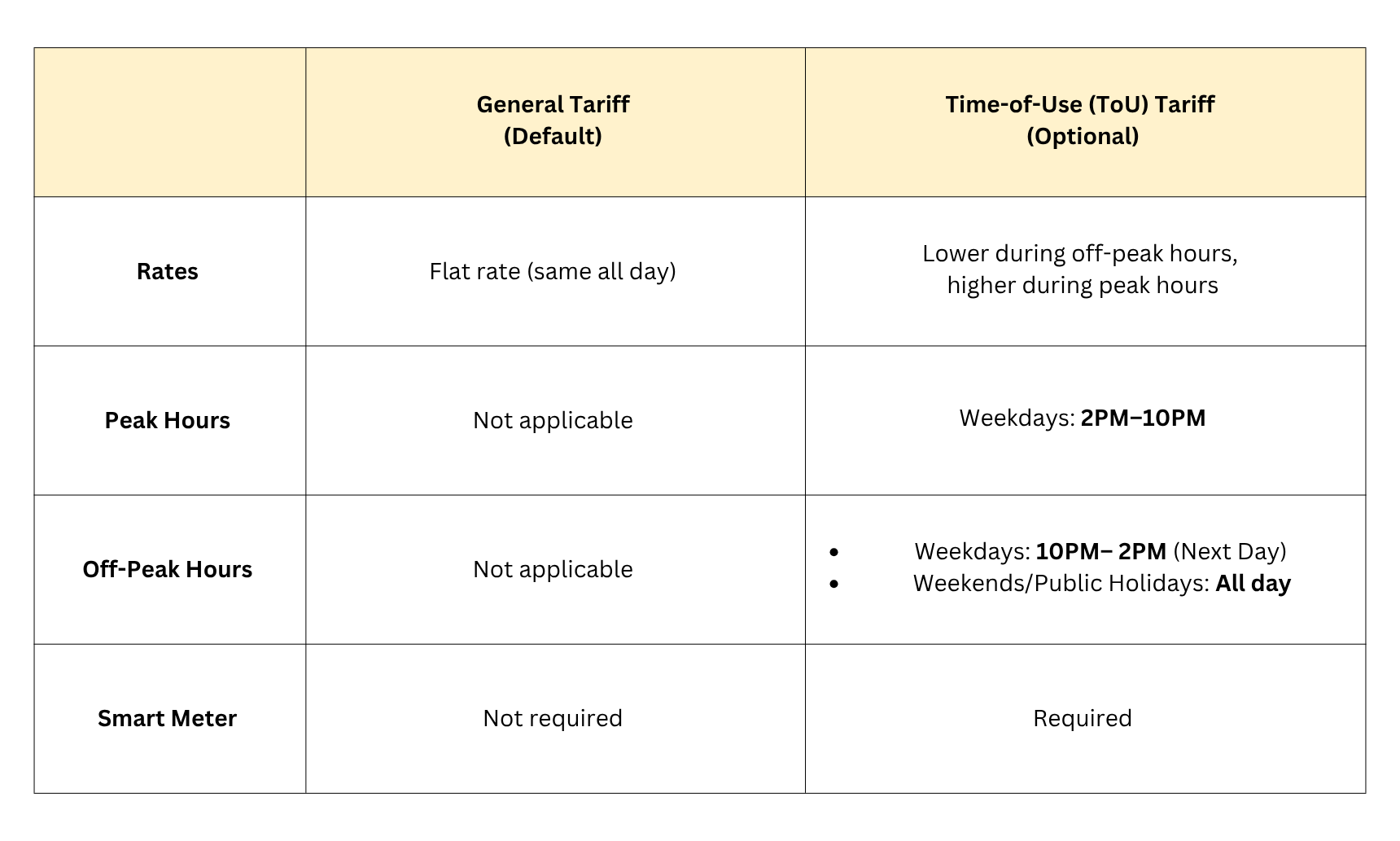
Note: Public holidays are the following 15 days including:
- New Year’s Day,
- the first and second days of Chinese New Year,
- the first and second days of Hari Raya Aidilfitri,
- Labour Day,
- Wesak Day,
- the Yang di-Pertuan Agong’s Birthday,
- Hari Raya Aidiladha, Awal Muharram,
- Independence Day,
- Malaysia Day,
- Maulidur Rasul,
- Deepavali Day, and
- Christmas Day.
Tip: ToU works best if you can shift energy use to off-peak times. If your usage is steady throughout the day, the General tariff may offer better cost predictability.
9. How to Apply for the ToU Tariff
According to TNB’s website, all registered TNB customers are eligible to switch from the General tariff to the Time-of-Use (ToU) tariff by applying with the required documents through one of the following channels:
- Email to tnbtou@tnb.com.my
- Visit the nearest Kedai Tenaga
- myTNB app - coming soon
More information here.
10. What are the new electricity rates?
Below are official rates from TNB, grouped by voltage and tariff.
LOW VOLTAGE (ex-Tariff B & D)
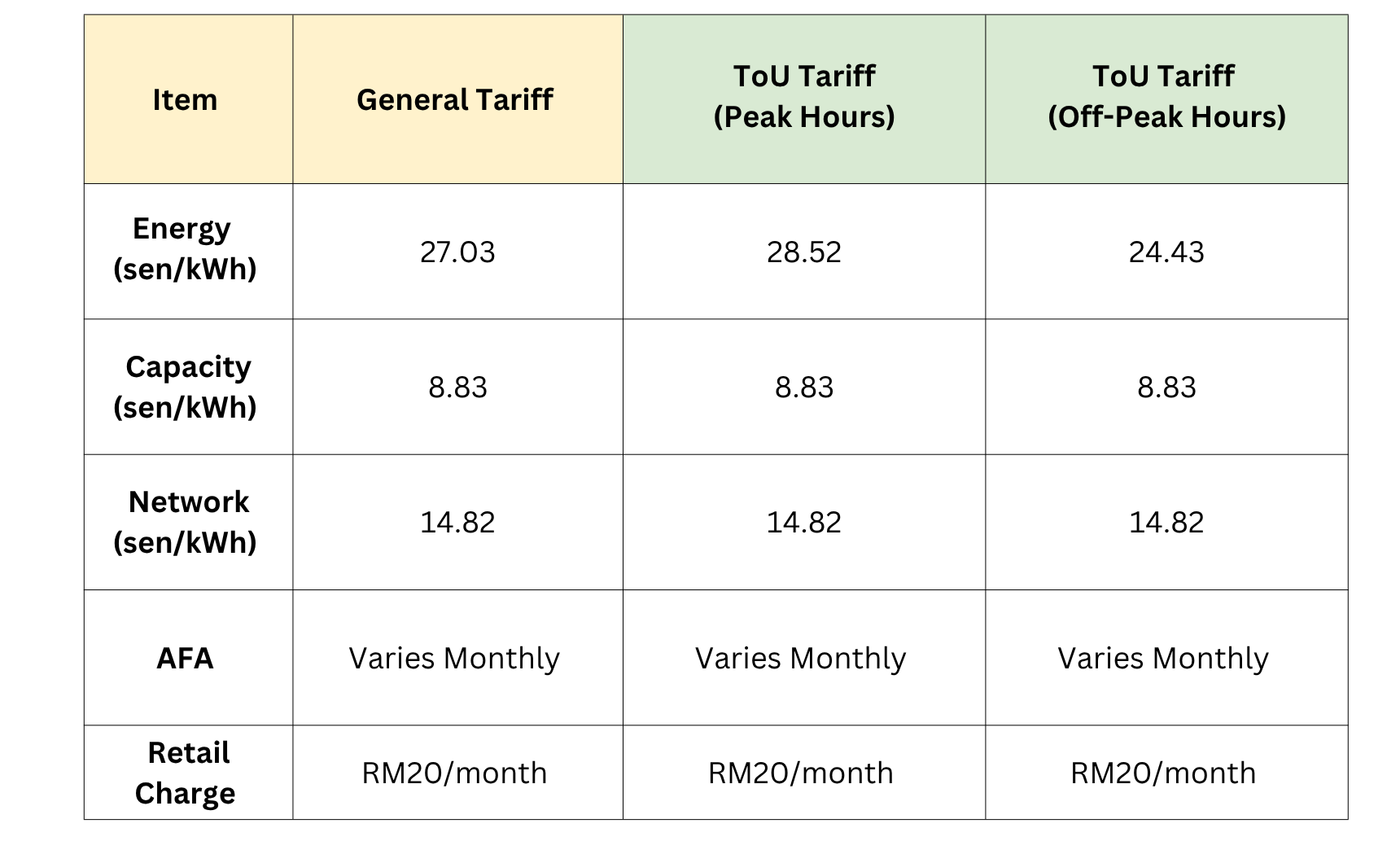
MEDIUM VOLTAGE (ex-Tariff C1 & C2)
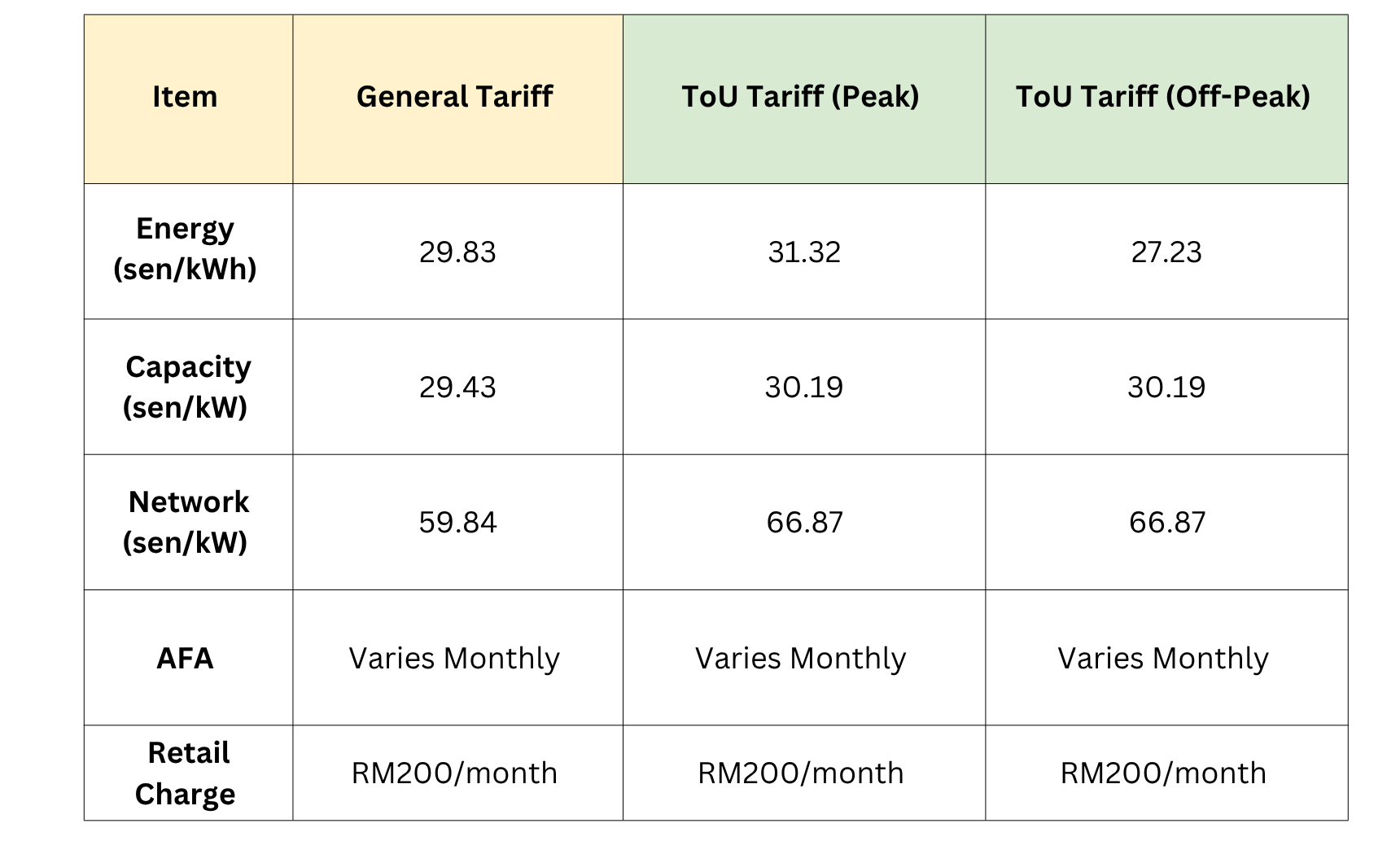
HIGH VOLTAGE (ex-Tariff C3 & E3)
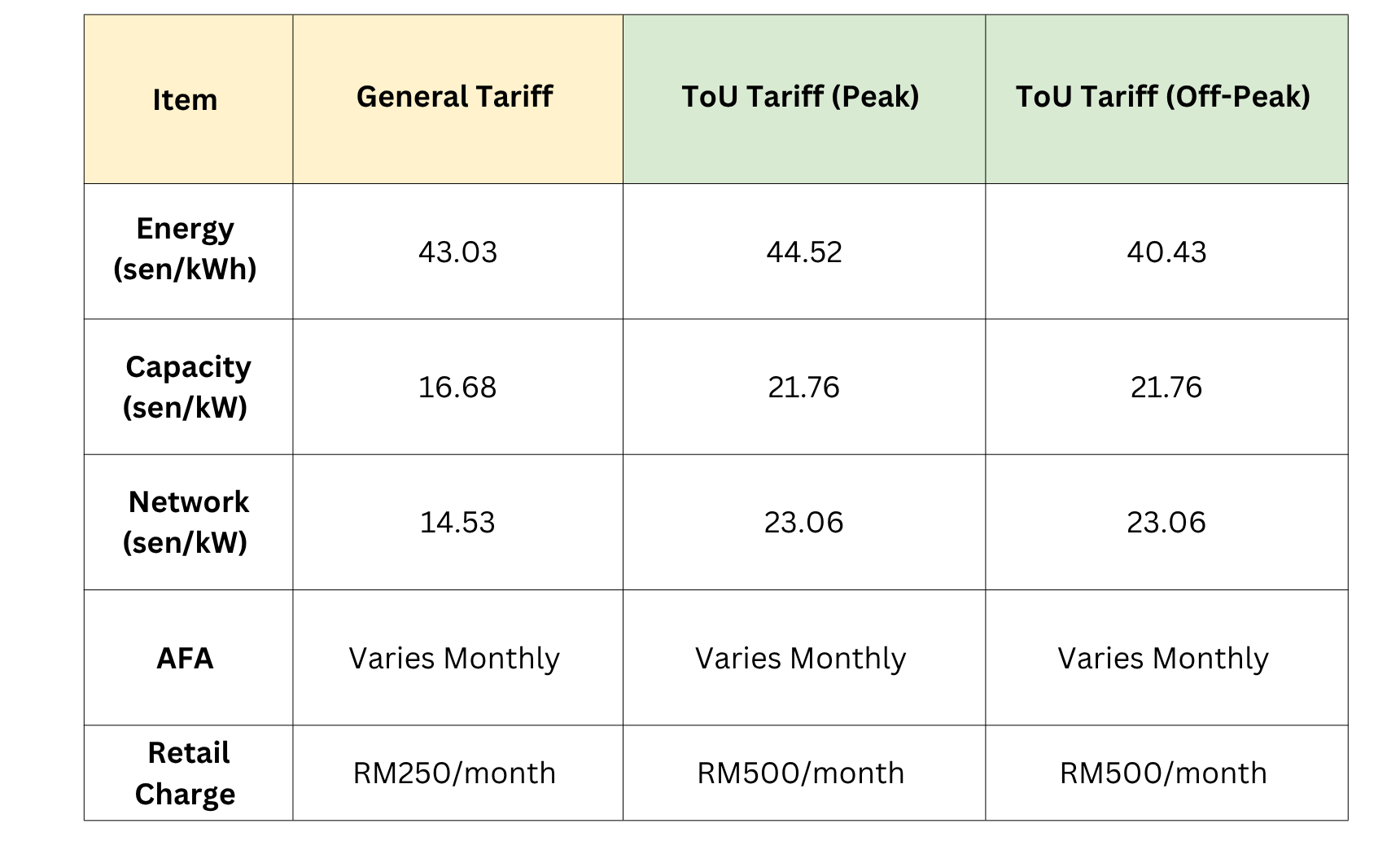
11. Will my bill go up? It depends on your usage pattern. You may see higher charges if:
- You operate heavily during peak hours under ToU tariff: 2PM–10PM weekdays.
- You experience high, short bursts of demand (kW spikes). Your equipment starts all at once, increasing peak load (affects Capacity & Network charges).
You may save if:
- You run operations during off-peak hours under ToU Tariff: 10PM–2PM weekdays, all weekend & public holidays.
- You manage your energy demand efficiently.
- You operate at night or on weekends.
12. How do I control my Capacity & Network charges?
These two charges are based on your maximum demand and how it stresses the grid. To reduce them:
- Stagger startup times for equipment.
- Reduce peak loads during peak hours - use less electricity during the most expensive or high-demand times of the day.
- Consider load management systems or Battery Energy Storage Systems (BESS) to flatten usage spikes.
13. Are there any rebates or incentives?
Yes — some users may qualify for rebates, discounts, or exemptions under the new structure:
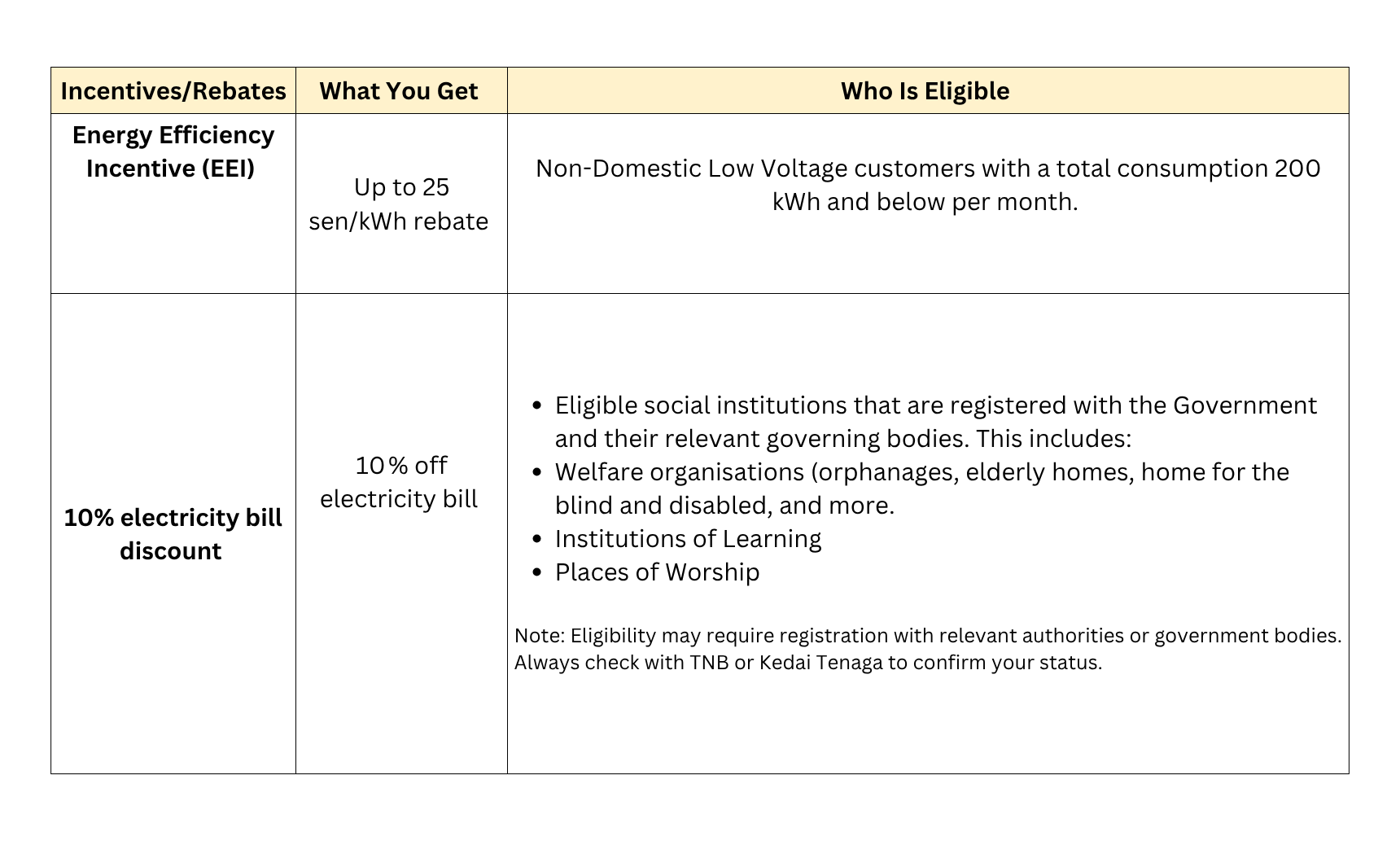
14. How do I know if ToU is worth it?
Ask yourself:
- Do I operate mainly during off-peak hours (10PM–2PM)?
- Am I open on weekends and public holidays?
- Can I shift major loads to non-peak times?
If you're unsure, just reach out to Sunview's energy experts here!

15. Is there an official TNB guide?
Yes—check the Tariff Schedule and bill calculator on myTNB. They also provide FAQs and step-by-step explanations.
16. Will more fees be added?
Nothing announced. The current five-part structure is designed to be transparent and stable through RP4. Changes after 2027 will depend on future regulatory reviews. Keep updated through TNB and the Energy Commission.
17. How do I keep track of updates?
Follow myTNB.com.my, TNB official app, and Energy Commission releases. Your TNB bill and myTNB app dashboard should detail any AFA changes monthly. Or follow Sunview Group’s social media pages for latest updates!
18. Does solar help under this new structure?
Yes — more than before:
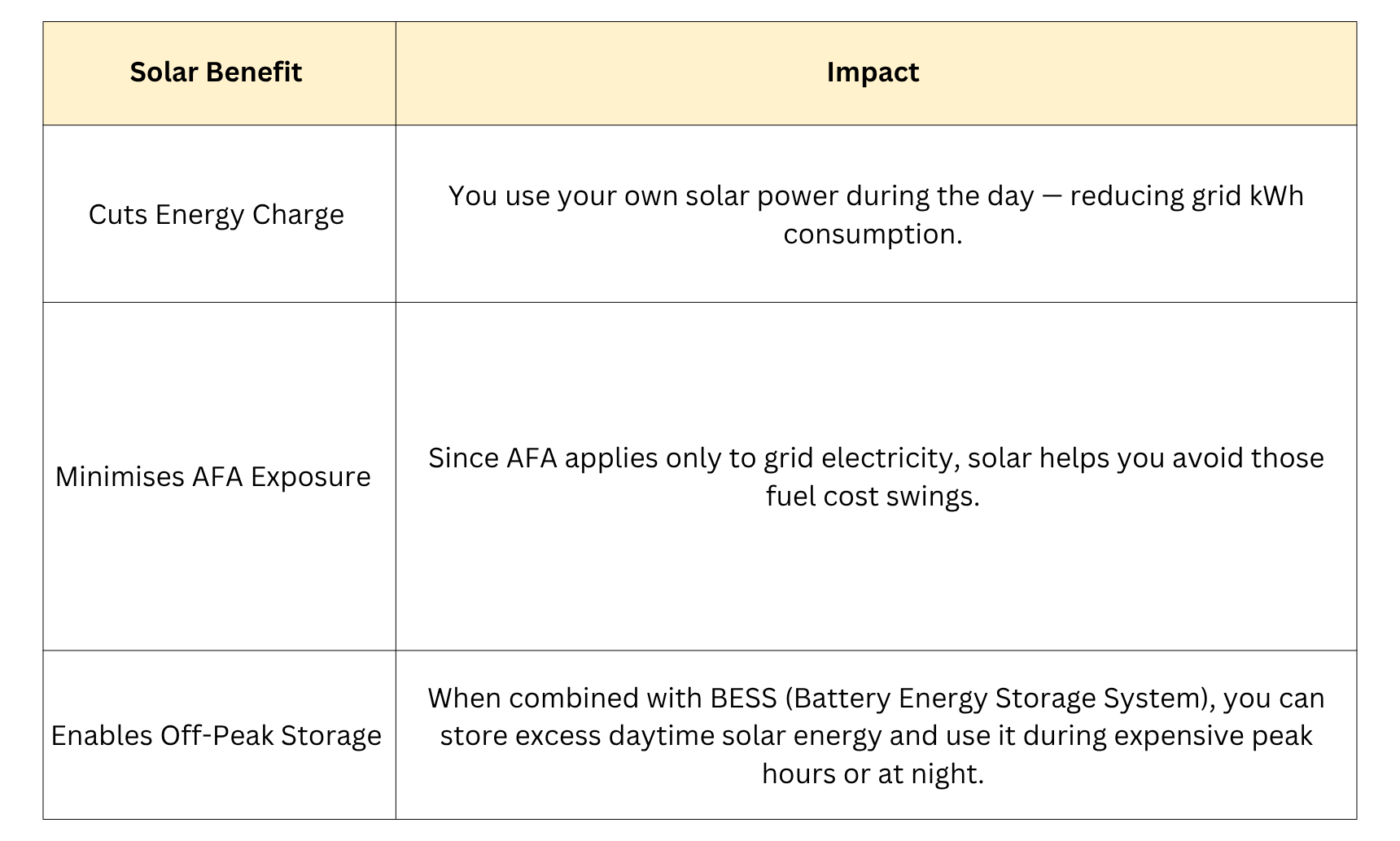
Reach out to Sunview Group if you’re looking for solar as an energy alternative.
19. If I already have solar under NEM 3.0 or SELCO. What now?
If you're already on solar, you can continue using your system as usual — no changes needed.
- NEM 3.0: Although NEM has officially ended for new applicants, existing users remain unaffected and will continue receiving credits based on their approved scheme until it expires.
- SELCO (Self-Consumption): You already enjoy immediate savings by using your own solar power — especially during the day when energy charges and peak demand are highest.
20. Your energy partner in navigating the new structureAt Sunview, we help commercial and industrial users make smarter energy decisions.
Here’s how we support you:
- Help you understand your new TNB bill and where solar fits in.
- Design solar systems tailored to your operations and peak loads.
- Identify incentives like GITA, zero-upfront plans, and government support.
- Provide long-term operations and maintenance support, and performance tracking.
Don’t just react to rising costs. Plan ahead, reduce risk, and take control of your energy future with expert support.
What This Tariff Shift Means for Businesses
This isn’t just a tariff update — it’s a full transformation in how businesses are billed. It’s now about:
- When you use electricity
- How much you depend on the grid
- How well you manage your demand
Understanding your bill is step one. But taking action — by adjusting operations, switching to ToU tariffs, or investing in solar — is what helps you save.
Interested to see how solar can help your business lower operational costs? Reach out to our energy experts for a free consultation.
Disclaimer:
This article is prepared for informational purposes only and is based on publicly available data as of July 2025. While we strive to ensure accuracy and clarity, tariff structures and charges may be updated or interpreted differently by official sources. For the most accurate and up-to-date information, we recommend referring directly to TNB or consulting our certified energy professionals before making any business decisions.






